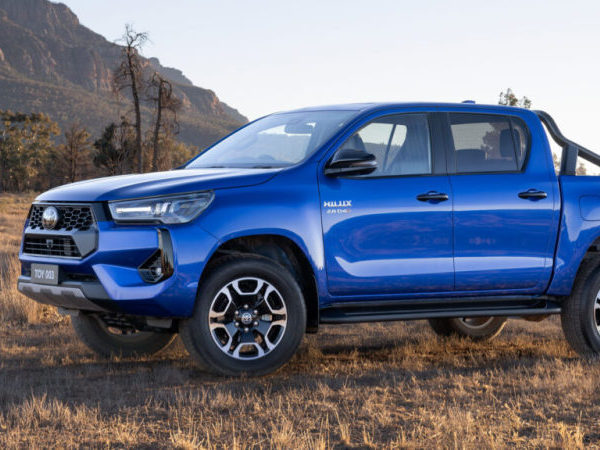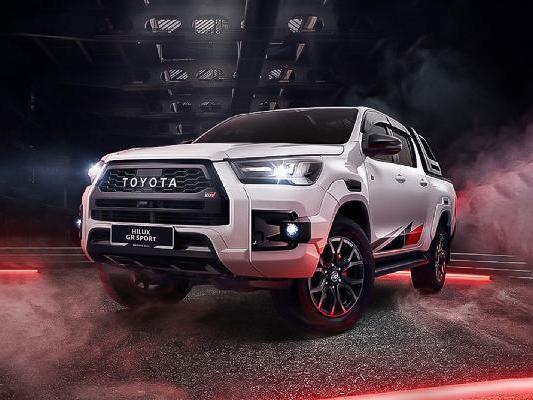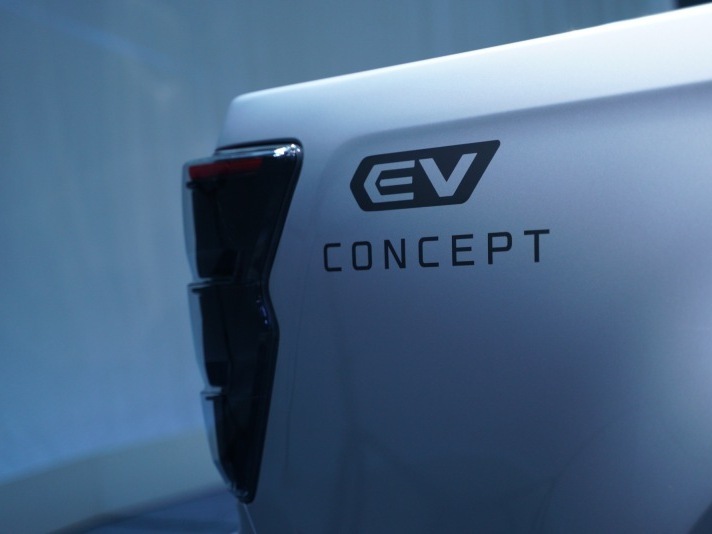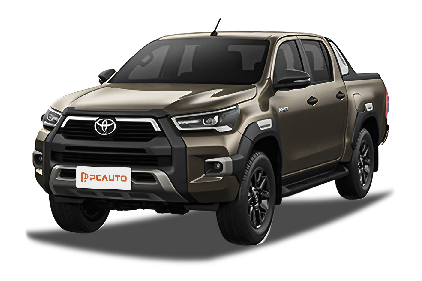Q
How much is a 2023 Hilux?
The 2023 Toyota Hilux in Malaysia comes with a range of prices depending on the variant and specs. The entry-level Hilux Single Cab starts at around RM 92,880, while the top-of-the-line Hilux Rogue is priced close to RM 146,900. Keep in mind, these figures might vary slightly based on dealer promotions or optional extras you might add.
The Hilux is a total legend in Toyota's lineup and absolutely kills it in the Malaysian market. It's built tough, packs strong performance, and handles off-road like a champ—perfect for our country's diverse roads and how we actually use our trucks here. Under the hood, the 2023 Hilux rocks either a 2.4L or 2.8L turbo diesel engine, delivering that sweet low-end torque we all love plus decent fuel efficiency. And safety? It's got Toyota Safety Sense, which includes pre-collision warning and lane departure alert—all the good stuff to keep you safer behind the wheel.
If you're thinking about picking one up, your best bet is to hit up your nearest authorized Toyota dealer. They can hook you up with the latest pricing, set you up for a test drive, and help you compare specs across different trims to find the one that fits you best. Oh, and let's not forget—Hilux holds its value like a boss in the used car market, and long-term running costs are pretty reasonable. That's a big part of why so many Malaysians swear by it.
Special Disclaimer: This content is published by users and does not represent the views or position of PCauto.
Related Q&A
Q
How much is the Hilux 2023 in the Philippines?
The 2023 Toyota Hilux in the Philippines has a price range that varies depending on the trim and configuration, roughly from 1,039,000 Philippine Pesos (around 86,000 Malaysian Ringgit) up to 1,813,000 Philippine Pesos (approximately 150,000 Malaysian Ringgit). Actual prices might fluctuate a bit due to dealer promotions or optional extras.
The Hilux, a classic pickup in Toyota's lineup, has always been a big hit in Southeast Asia. Its durability and off-road chops make it a perfect fit for the Philippines' diverse road conditions. For our Malaysian readers, while the Hilux is available locally, the Philippine-spec models might have some subtle differences. For instance, certain variants could see tweaks to engine displacement or suspension setups to better suit local market needs.
It's worth noting that the Hilux is produced in multiple global markets, so prices and specifications can vary quite a bit by region. If you're considering a cross-border purchase, your best bet is to hit up local dealerships directly for the latest scoop.
Beyond all that, pickup trucks are super practical in Southeast Asia – they handle cargo hauling and family trips with equal ease, and that's a big part of why the Hilux has maintained such strong sales figures over the years.
Q
How much is the 2023 Toyota Hilux GR Sport?
The 2023 Toyota Hilux GR Sport is officially priced at around RM155,900 in Malaysia (excluding insurance and registration fees). This is the high-performance variant of the Hilux lineup, packing a 2.8-liter turbocharged diesel engine that cranks out 201 horsepower and a meaty 500 Nm of peak torque. It also gets GR Sport-exclusive sport-tuned suspension, exterior body kit, and interior design touches, which really up the ante in terms of driving dynamics and visual appeal.
As a sport-focused pickup, the Hilux GR Sport doesn't just retain the standard model's legendary durability and off-road capability; it also benefits from GR's tweaks to sharpen up the on-road handling. It's a solid pick for folks who want both power and practicality. The Toyota Hilux has always been a top seller in Malaysia, and the GR Sport version just gives those buyers who crave a bit more personality and sportiness another compelling option.
On top of that, Toyota's service network is spread all over the country, so owners can easily get maintenance and support when they need it. If this truck's caught your eye, I'd definitely recommend heading down to your nearest Toyota showroom for a test drive to really feel what it's capable of and check out all the specs for yourself.
Q
What is the price of a 2023 Toyota Hilux?
The 2023 Toyota Hilux in Malaysia comes with a range of prices depending on the variant and specs. The base Single Cab starts at around RM93,000, while the Double Cab kicks off from RM104,000. If you're eyeing the top-tier GR Sport trim, you're looking at approximately RM149,000. Keep in mind, these figures might shift slightly based on your location, ongoing promotions, or any extra accessories you decide to add.
A bona fide legend in Toyota's lineup, the Hilux has built a solid fan base in Malaysia thanks to its reputation for toughness and versatility. It's right at home on both city streets and rural roads, and even handles light off-road adventures with ease. Under the hood, you'll find either a 2.4-liter or 2.8-liter turbo diesel engine, delivering plenty of torque for the job while keeping fuel efficiency in check.
In the local market, the Hilux goes head-to-head with rivals like the Mitsubishi Triton and Ford Ranger. When weighing your options, it's smart to factor in your budget, how you plan to use the truck, and the after-sales service network. My advice? Swing by an authorized Toyota dealer for a test drive—you’ll get the latest pricing, plus any exclusive deals they might be running.
Q
What kind of oil does a Toyota Hilux 2023 take?
For the 2023 Toyota Hilux in Malaysia, the recommended engine oil is typically a full synthetic that meets API SN or SP standards, with viscosity grades 5W-30 or 10W-30 being the go-to choices. Your final pick should really depend on your driving conditions and habits. Here in Malaysia's tropical heat, for instance, 10W-30 might offer better engine protection when temperatures spike. Toyota officially suggests changing the oil every 10,000 kilometers or 6 months, whichever comes first, to keep that engine running at its peak.
Also, keep an eye out for oils with the ILSAC GF-6 certification – these are formulated to boost fuel efficiency and keep carbon deposits in check. If you're often hauling heavy loads or doing long highway stretches, stepping up to a higher-performance full synthetic could be worth it for the extra wear protection. While you're at it with the regular oil changes, don't skip checking the oil filter to make sure it's doing its job properly – that helps extend the engine's lifespan too.
And a quick note for Hilux models with the turbo diesel engine: you'll need an oil that specifically meets diesel standards like ACEA C3 or JASO DL-1 to avoid any issues with the emission system. If you're ever in doubt, the owner's manual is your best friend, or just swing by a Toyota authorized service center for some expert advice.
Q
What size engine is in the Hilux 2023?
The 2023 Toyota Hilux caters to diverse Malaysian drivers with a solid range of engine options, and the real crowd-pleasers are the 2.4-liter and 2.8-liter turbo diesel mills. Both pack advanced common-rail direct injection and variable geometry turbochargers, striking a nice balance between fuel efficiency and gutsy performance. The 2.4L kicks out around 150 horsepower and a meaty 400 Nm of torque, while the 2.8L steps things up with roughly 204 hp and a whopping 500 Nm – perfect for folks who need that extra grunt for heavy loads or off-road adventures.
If you're more of a petrol person, there's also the 2.7-liter naturally aspirated gas engine, good for 166 hp and 245 Nm of torque. What really stands out here is how Toyota's legendary reliability and durability shine through with these engines. They've been put through the wringer to handle Malaysia's tricky mix of road conditions and weather, so you know they'll hold up.
So, for Malaysian buyers eyeing a Hilux, it all comes down to your daily grind and budget. Whether you're navigating city streets or heading off the beaten path, there's an engine option that'll keep you moving reliably.
Q
What is the fuel range of the Hilux 2023?
The fuel range of the 2023 Toyota Hilux varies depending on the specific model and driving conditions. Generally speaking, the version equipped with the 2.4 - liter turbo diesel engine can achieve a combined range of 800 to 1000 kilometers on a full tank (approximately 80 liters capacity). The 2.7 - liter petrol engine version has a slightly lower range, around 600 to 800 kilometers. Actual range will also be affected by payload, driving habits, and road conditions.
For Malaysian users, the diesel - powered Hilux is particularly popular. Its fuel efficiency makes it well - suited for long - distance drives and cargo - carrying requirements, and Malaysia's relatively lower diesel prices further reduce running costs. Additionally, the Hilux's fuel tank is designed with practicality in mind, with a conveniently located fuel filler, making it ideal for users who frequently commute between urban and suburban areas.
If you often drive in Malaysia's hilly or rural areas, the diesel version is worth considering. Not only does it offer longer range, but its high low - end torque characteristics also make it better suited for climbing hills and carrying heavy loads. It's important to note that regular maintenance and proper driving habits can effectively extend fuel range, such as avoiding sudden acceleration and maintaining proper tire pressure.
Q
What is the difference between 2.8 L and 3.0 L Hilux?
In Malaysia, there is no 3.0-liter variant of the Toyota Hilux; instead, the models available feature a 2.8-liter engine, such as the 2023 Hilux Double Cab 2.8 Rogue AT 4WD and the 2023 Toyota Hilux GR Sport 2.8 AT. Taking these two 2.8-liter variants as examples, they offer more powerful performance compared to the 2.4-liter models, with the 2.8-liter engine delivering a maximum power of 204 PS, while the 2.4-liter engine reaches a maximum power of 150 PS. Additionally, the 2.8-liter models provide a maximum torque of 500 N·m, compared to 400 N·m for the 2.4-liter variants.
In terms of features, some versions of the 2.8-liter models come equipped with more advanced active safety technologies, such as lane-keeping assist, lane departure warning systems, active braking/safety systems, and forward collision warning—some of which are not available on select 2.4-liter models. Furthermore, the 2.8-liter variants also offer enhanced comfort features, such as 8-way power-adjustable front seats and upgraded air conditioning systems in certain versions.
When it comes to pricing, the 2.8-liter models are priced higher, with the 2023 Hilux Double Cab 2.8 Rogue AT 4WD retailing for RM 158,880 and the 2023 Toyota Hilux GR Sport 2.8 AT costing RM 169,080, both of which exceed the prices of their 2.4-liter counterparts.
Q
Which is better, Hilux or D-Max?
Both the Toyota Hilux and Isuzu D-Max have their unique advantages, making it challenging to simply declare one as better than the other. The Hilux, a model under the Toyota brand, is renowned for its reliability and durability, with many owners reporting that its mechanical structure is stable enough to handle various complex and harsh road conditions. Its extensive maintenance network makes post-purchase upkeep convenient; in remote areas, finding parts and repair services is relatively easy. The price range for the Hilux varies from RM 89,100 to RM 169,080, with multiple powertrain configurations available.
On the other hand, the Isuzu D-Max shines in terms of ride comfort and interior quality. Its interior design places a strong emphasis on ergonomics, offering comfortable seating and a smooth driving experience. If you frequently navigate challenging terrains and prioritize the vehicle's durability and stability, the Hilux is an excellent choice. However, if you place a higher value on driving comfort and interior quality, the D-Max may be more suitable for your needs.
Q
What is the best engine of Hilux ?
The Toyota Hilux offers various engine options, each with its own characteristics, so the “best” choice ultimately depends on individual needs. The 2.4-liter diesel engine, such as that found in the 2023 Toyota Hilux Single Cab 2.4 MT 4WD, has a displacement of 2393 mL, delivering a maximum power of 150 PS, 110.3 kW, and a peak torque of 400 N·m. This variant is an excellent choice for users who prioritize fuel efficiency and everyday practicality, as it adequately meets the demands of daily commuting and general cargo transport on regular road conditions. Moreover, it is relatively affordable, with the Single Cab model priced at RM 103,880.
In contrast, the 2.8-liter turbocharged diesel engine provides a more robust performance, as seen in the 2023 Hilux Double Cab 2.8 Rogue AT 4WD. This engine boasts a displacement of 2755 mL, generating a maximum power of 204 PS, 150 kW, and a peak torque of 500 N·m. It handles complex terrains and heavy load requirements with ease, proving powerful strength in off-road situations or when towing heavy loads. Additionally, high-end versions equipped with this engine often come with more advanced features and luxurious interiors, but at a higher price point, such as the 2023 Toyota Hilux GR Sport 2.8 AT, which retails for RM 169,080.
If you frequently encounter challenging road conditions, have heavy loading needs, or seek a more powerful driving experience, the Hilux with the 2.8-liter engine would be a better choice. However, for those who primarily use the vehicle for everyday purposes, the 2.4-liter engine is more than sufficient and offers better value for money.
Q
What is the fuel range of a Toyota Hilux?
The range of the Toyota Hilux depends on several factors, including the specific model, driving conditions, and driving style. Generally, the Hilux has a fuel tank capacity of 80 liters. For instance, the official combined fuel consumption of the 2023 Hilux Double Cab 2.8 Rogue AT 4WD is 10.2 liters per 100 kilometers. Based on this fuel consumption and the 80-liter tank, the estimated range can be calculated as follows: 80 liters divided by 10.2 liters per 100 kilometers, which equals approximately 784 kilometers.
As another example, the official combined fuel consumption for the 2023 Toyota Hilux GR Sport 2.8 AT is 8.5 liters per 100 kilometers. Using the 80-liter tank, the range is roughly 80 divided by 8.5, resulting in approximately 941 kilometers. It is important to note that these are only estimates, and actual range may vary due to factors such as terrain, traffic conditions, and vehicle load.
Latest Q&A
Q
How to reset the tire pressure sensor in Honda Civic?
To reset the TPMS on your Honda Civic, start by turning the ignition to the "on" position without starting the engine. Then, locate the "TPMS" button on the dashboard or navigate to the vehicle settings menu via the infotainment screen. Select the "Tire Pressure Calibration" option and follow the prompts to complete the reset. Afterward, drive normally for about 10 minutes to let the system automatically learn the new tire pressure data.
It's worth noting that the process can vary slightly between Civic model years. Newer models might offer touchscreen controls, while older ones may require using the steering wheel buttons to cycle through menus. For Malaysian owners, given the hot climate, it's a good idea to check your tire pressure—including the spare—once a month. High temperatures can cause pressure to rise, and improper tire pressure doesn't just hurt fuel economy and handling; it can also speed up tire wear.
If the TPMS light stays on after resetting, the sensor battery might be dead or you could have a slow leak. In that case, it's best to head to a professional workshop for further diagnosis. Also, TPMS sensor batteries typically last 5-7 years, and when replacing them, sticking with OEM parts is recommended to ensure compatibility.
Q
How much is a Honda Civic 2024
The 2024 Honda Civic's pricing in Malaysia varies depending on the trim level and specs, typically ranging from around RM130,000 to RM160,000. For the most up-to-date figures and any ongoing promotions, your best bet is to hit up your local authorized Honda dealer.
As a Honda staple, the Civic has long been a favorite among Malaysian drivers, thanks to its solid reliability, sleek looks, and tech-forward features. The 2024 model steps things up even more in the safety and driver assistance department—expect it to come equipped with the Honda Sensing suite, which includes handy features like adaptive cruise control and lane-keeping assist.
Another big plus for the Civic in Malaysia? Its fuel efficiency and wallet-friendly maintenance costs. If you're in the market for a compact sedan, this one's definitely worth a spot on your shortlist. Of course, it's not without competition—rivals like the Toyota Corolla and Mazda 3 are also vying for attention. At the end of the day, it all comes down to your personal taste and budget, so take the time to compare them side by side.
Q
Which tyre brand is the best for Honda Civic?
When it comes to picking the right tires for your Honda Civic in Malaysia, you’ve got to factor in our local road conditions, climate, and your driving style. The Michelin Pilot Sport 4 or Primacy 4 lines are solid go-tos—they strike a nice balance between dry and wet grip, durability, and noise levels, matching the Civic’s sporty character pretty well. If comfort and long mileage are your top priorities, especially for those frequent highway runs, the Bridgestone Turanza T005A leans more that way. On a tighter budget? The Continental UC6 or Goodyear Assurance TripleMax 2 still deliver reliable daily driving performance with better value for money.
Since Malaysia gets a fair amount of rain, prioritizing tires with high wet performance ratings (like an A rating on the EU label) is smart. Also, make sure the size matches your factory specs—common ones are 215/50 R17 or 225/45 R18. Keeping an eye on tire pressure (around 230-240 kPa) and checking tread wear regularly will help them last longer. If you often hit rough roads, consider models with reinforced sidewalls, though they might nudge fuel consumption up a tiny bit.
Q
How to update the satellite navigation system of Honda Civic ?
To update the satellite navigation system in your Honda Civic, first you need to confirm your car's model year and navigation system version, since different model years might use different update methods. For newer Honda Civics, you can get the latest navigation map update package from the official Honda Malaysia website or an authorized dealership. Usually, you'll need to download it to a USB drive and then plug that into your car's USB port to install. If you have an older model, you might have to head to a dealership where they can do the update using special equipment. It's a good idea to back up your existing data before updating and make sure your car battery is fully charged to avoid any interruptions. Also, updating your navigation system regularly not only gets you the latest road info but also boosts system performance—like faster route calculations and more accurate real-time traffic data. If you're not sure how to do the update yourself, it's best to contact Honda Malaysia's customer service or book an appointment with a dealership to help out, so the update goes smoothly. In the meantime, you could also use smartphone navigation apps like Waze or Google Maps as a temporary alternative—they usually offer real-time updates and more features anyway.
Q
What engine does a 2015 Honda Civic have?
The 2015 Honda Civic in Malaysia came with two engine options: a 1.8-liter SOHC i-VTEC four-cylinder naturally aspirated unit and a 2.0-liter SOHC i-VTEC four-cylinder naturally aspirated engine. The 1.8L puts out 141 horsepower and 174 Nm of torque, while the 2.0L ups the ante to 155 hp and 190 Nm. Both are paired with a 5-speed automatic transmission, delivering smooth driving dynamics and solid fuel efficiency.
What really stands out is Honda's i-VTEC tech – it smartly adjusts valve timing and lift to optimize performance and efficiency across different engine speeds, making it perfect for Malaysia's mix of city commutes and highway runs. The 2015 Civic also built a strong reputation locally for being durable and easy on maintenance costs. Honda clearly thought about our tropical climate too – the engine's cooling system and electronics are tweaked to handle the heat and humidity, ensuring reliable operation even when things get sweltering.
For Malaysian buyers, the 2015 Civic's engines offer more than enough power for daily driving, and their long-term running costs are pretty reasonable. No wonder it's still a hot pick in the used car market.
View MoreRelated News

There is news that the next-generation Toyota Hilux will be released in November, bringing a major redesign.
MichaelSep 28, 2025

2026 Toyota Hilux Interior Unveiled, and It’s Giving Prado Vibes
JohnAug 6, 2025

All-New 2025 Toyota Hilux Coming Soon: Here's What to Expect
JamesJun 24, 2025

Toyota Hilux: A Buying Guide to Help You Choose the Right Model
MichaelMar 25, 2025

Reasons Why Pickups and SUVs Are Not Suitable for Electric Drive, Industry Secrets You Must Know Before Buying
JamesFeb 14, 2025
View More


















Pros
Cons